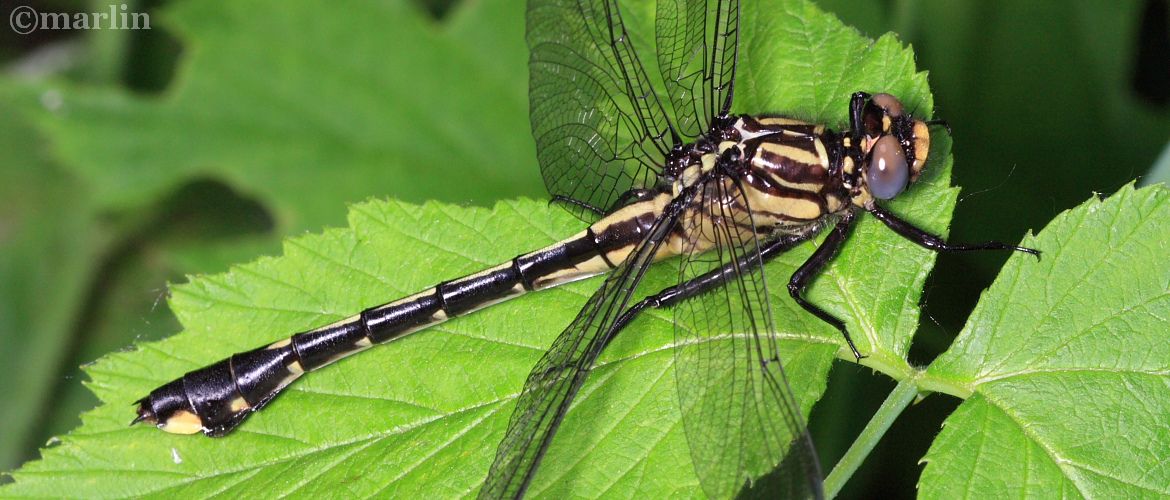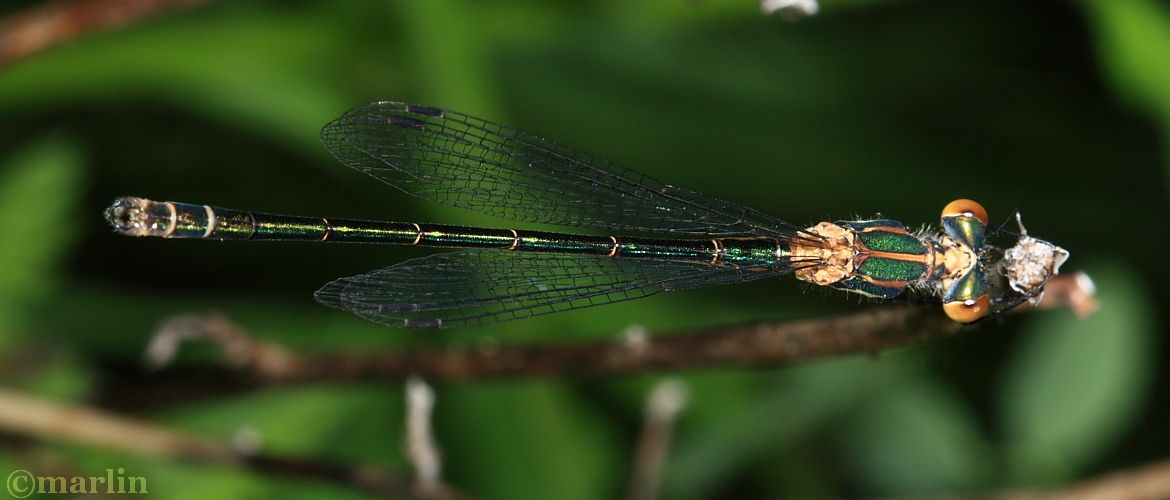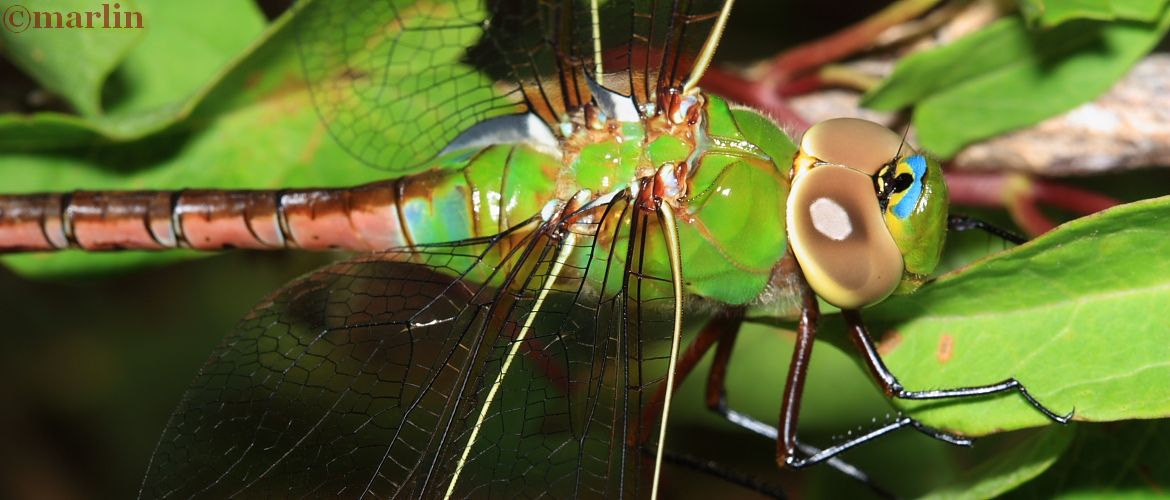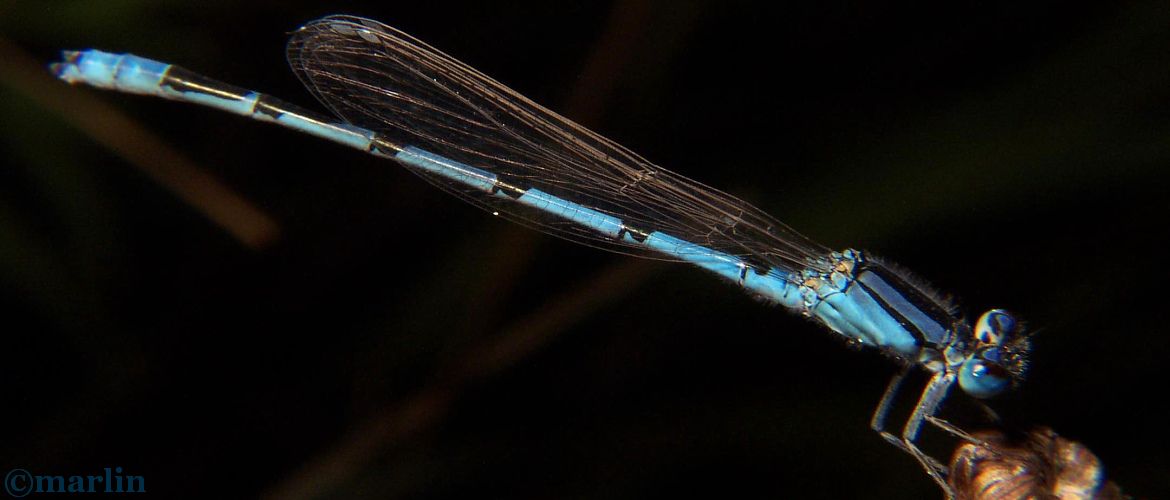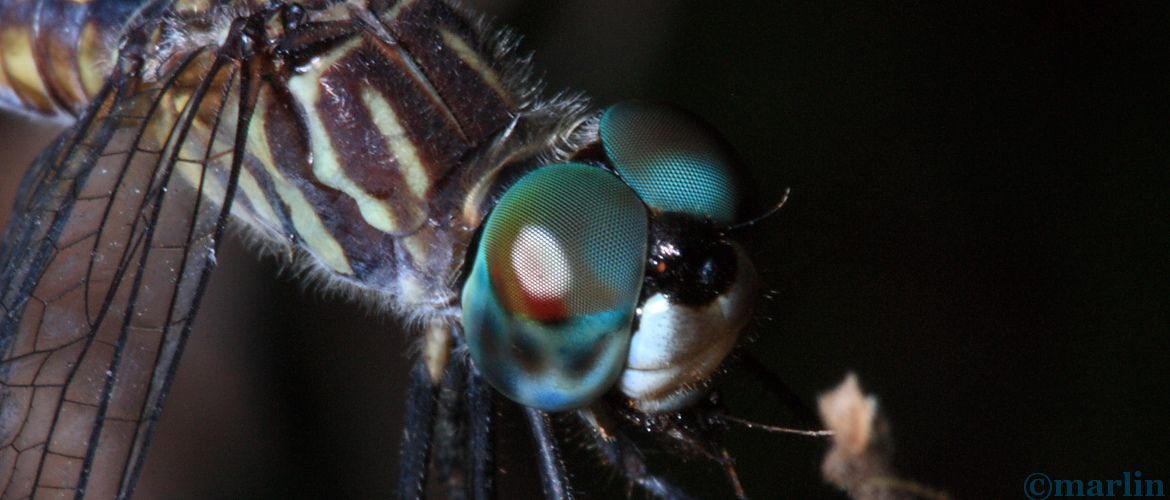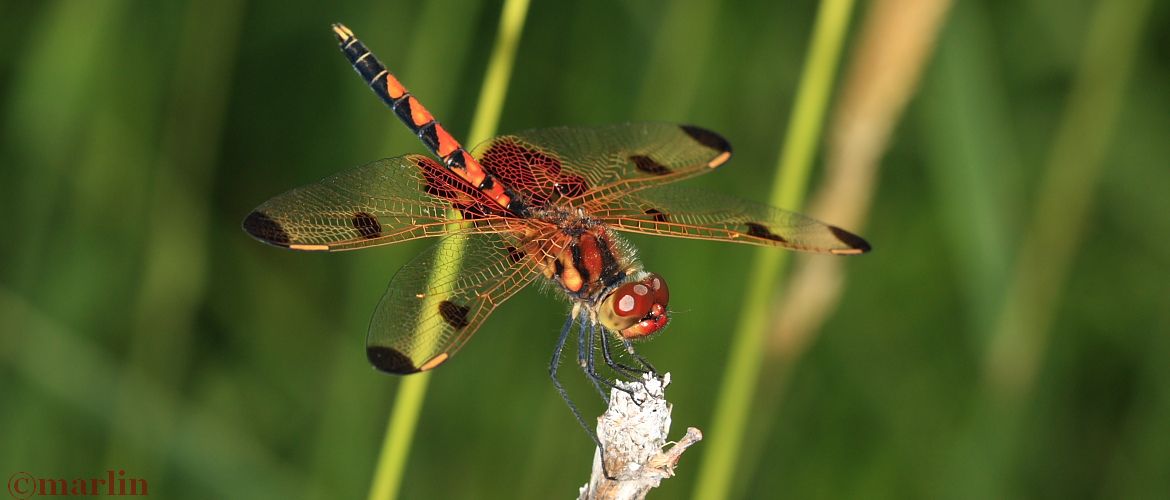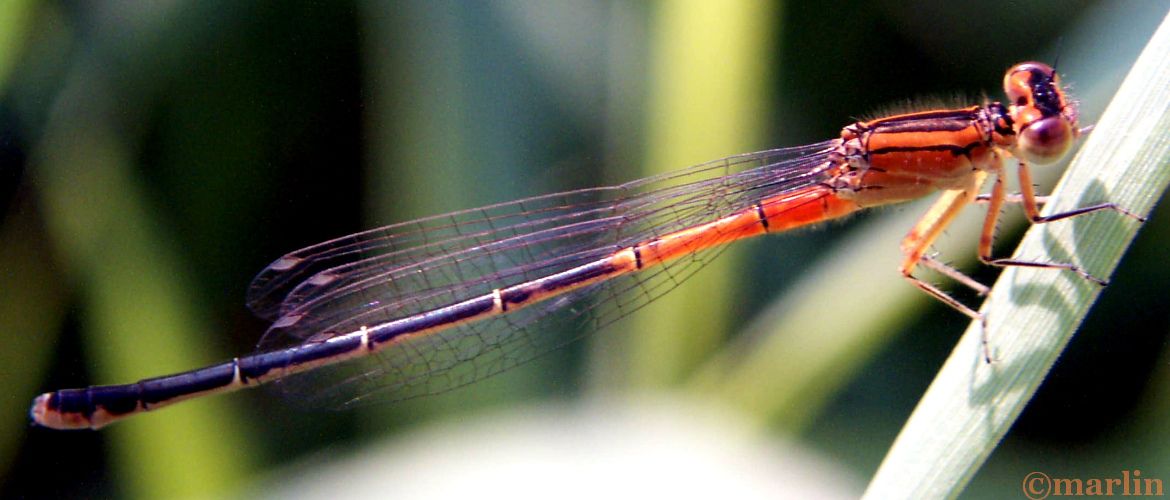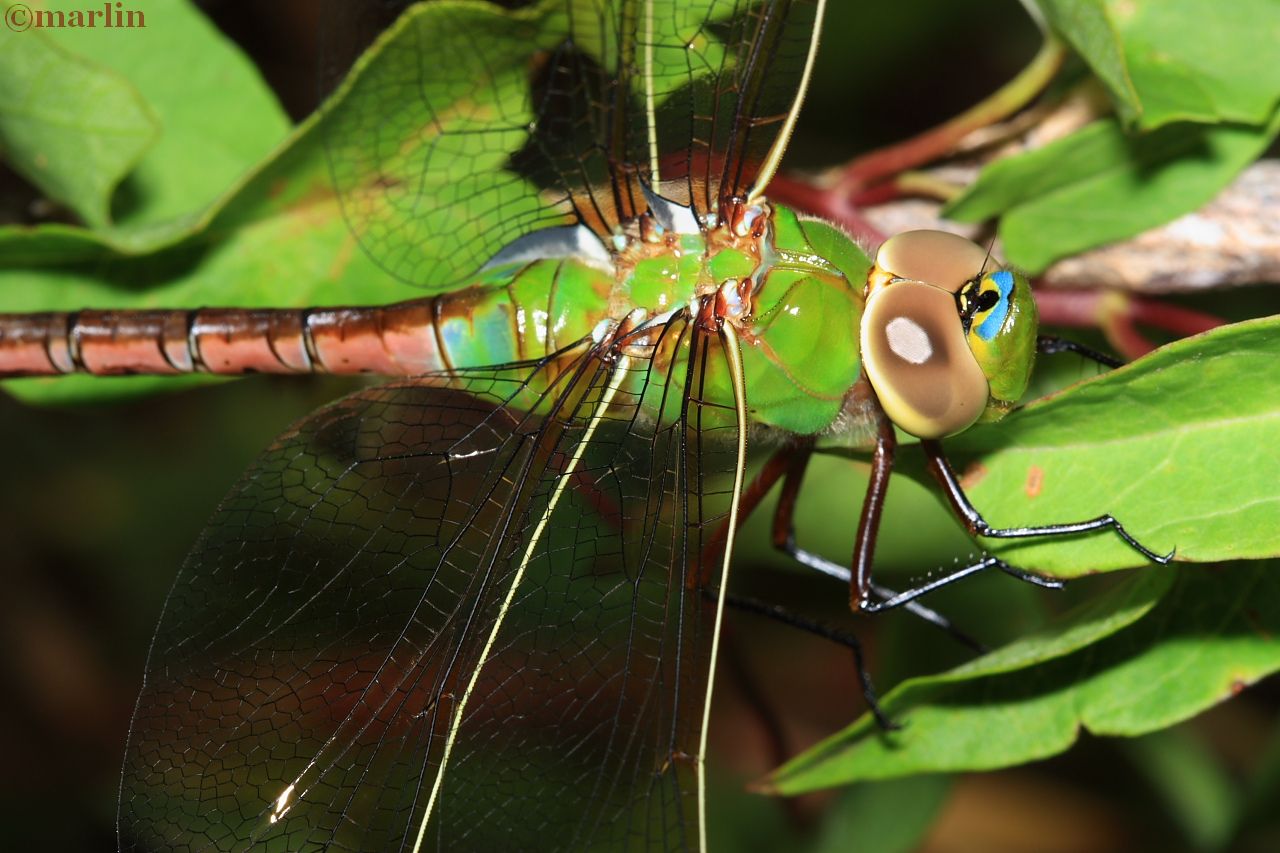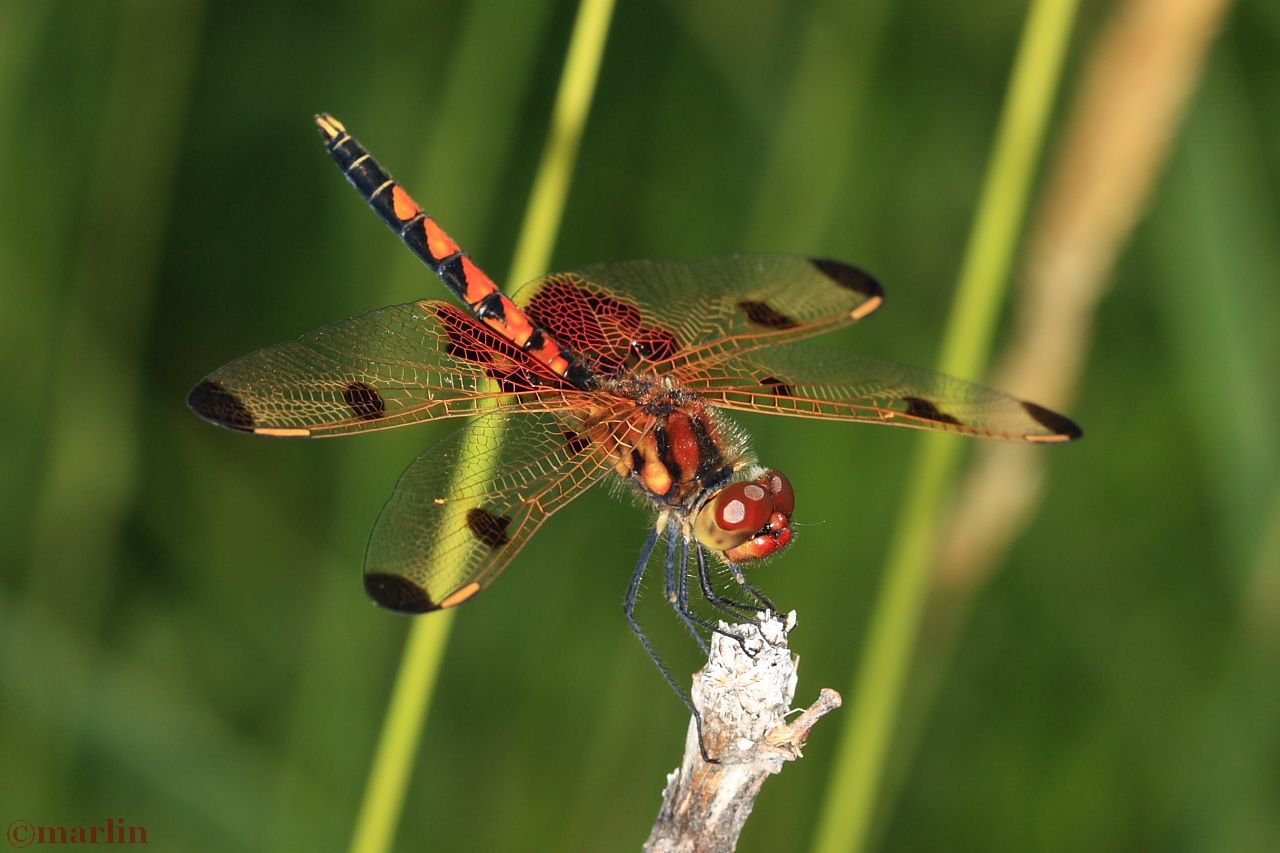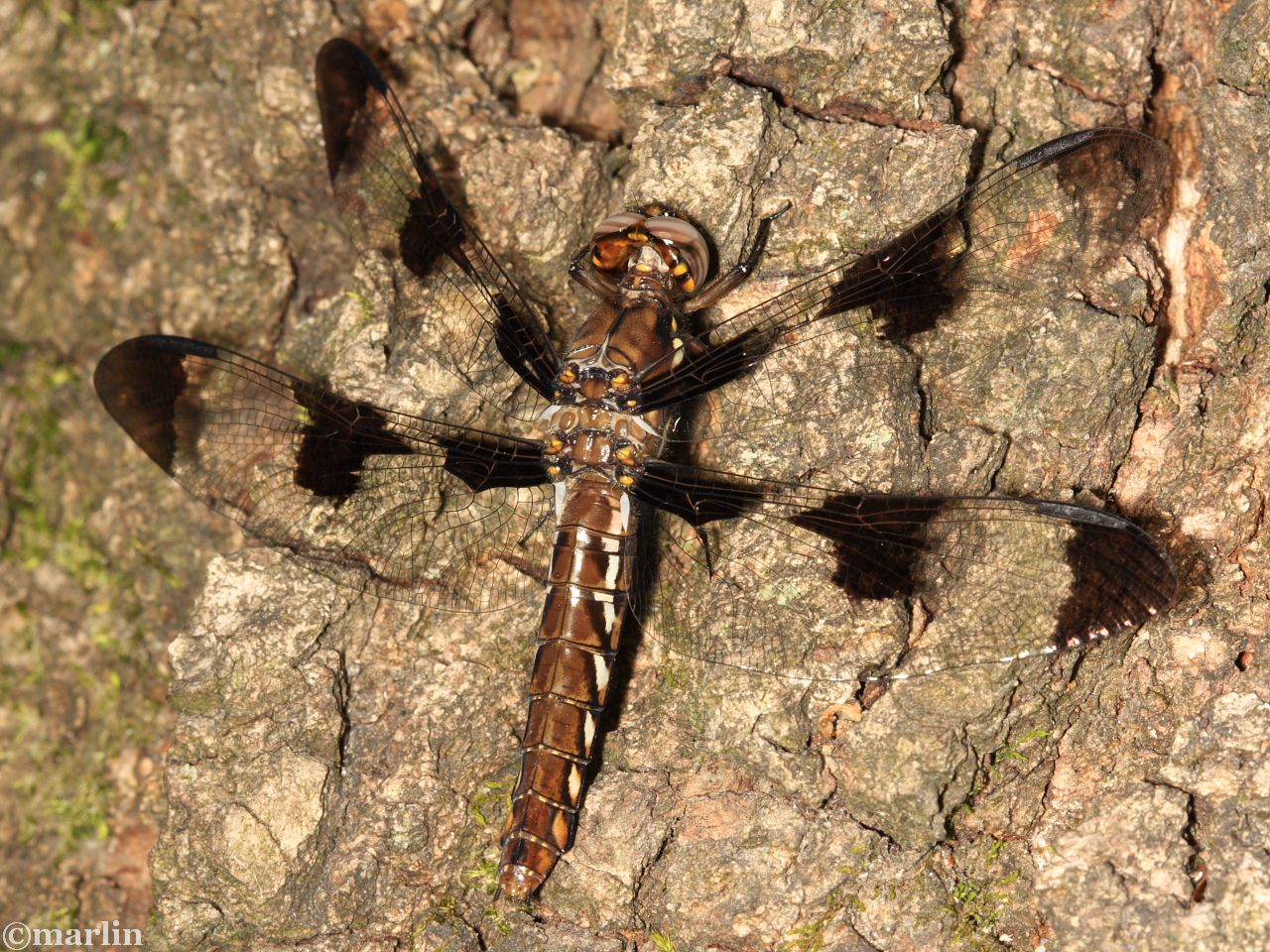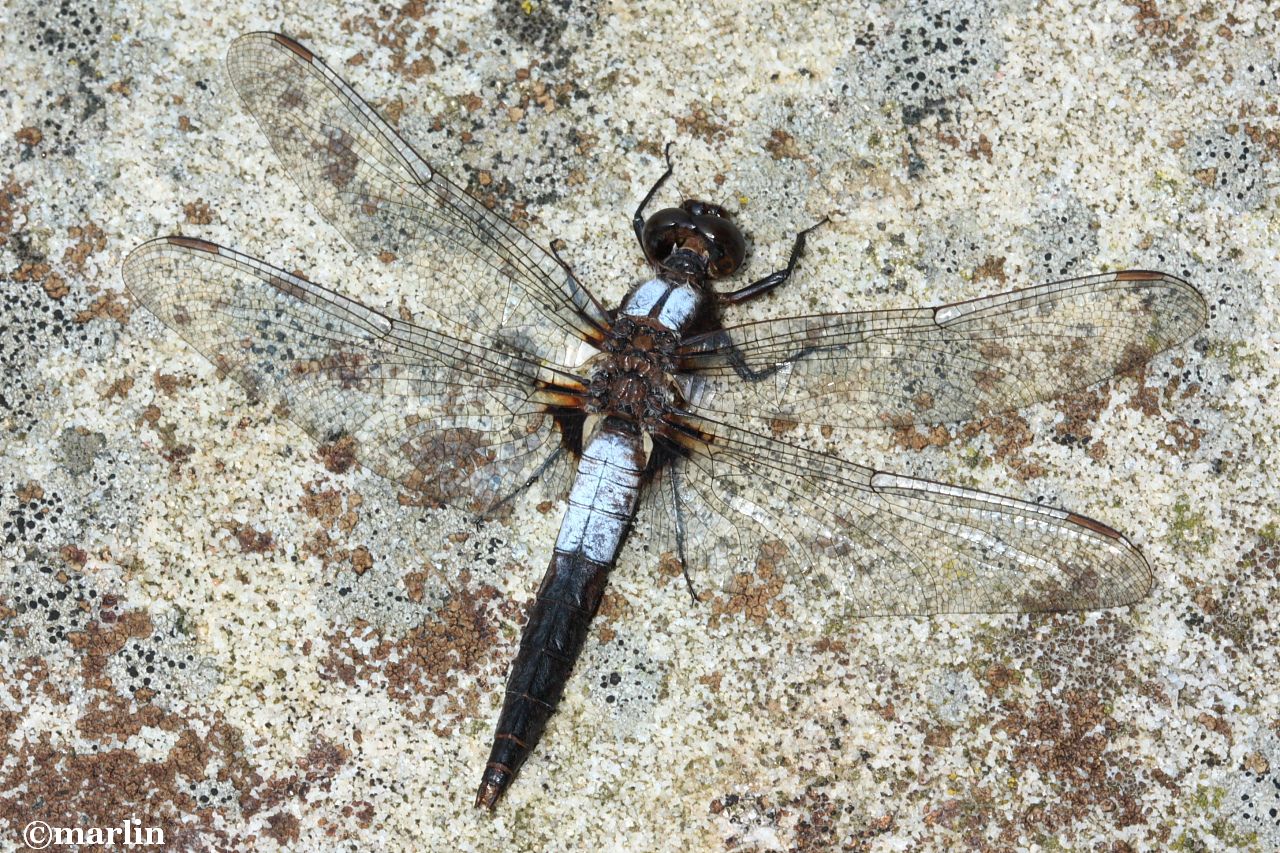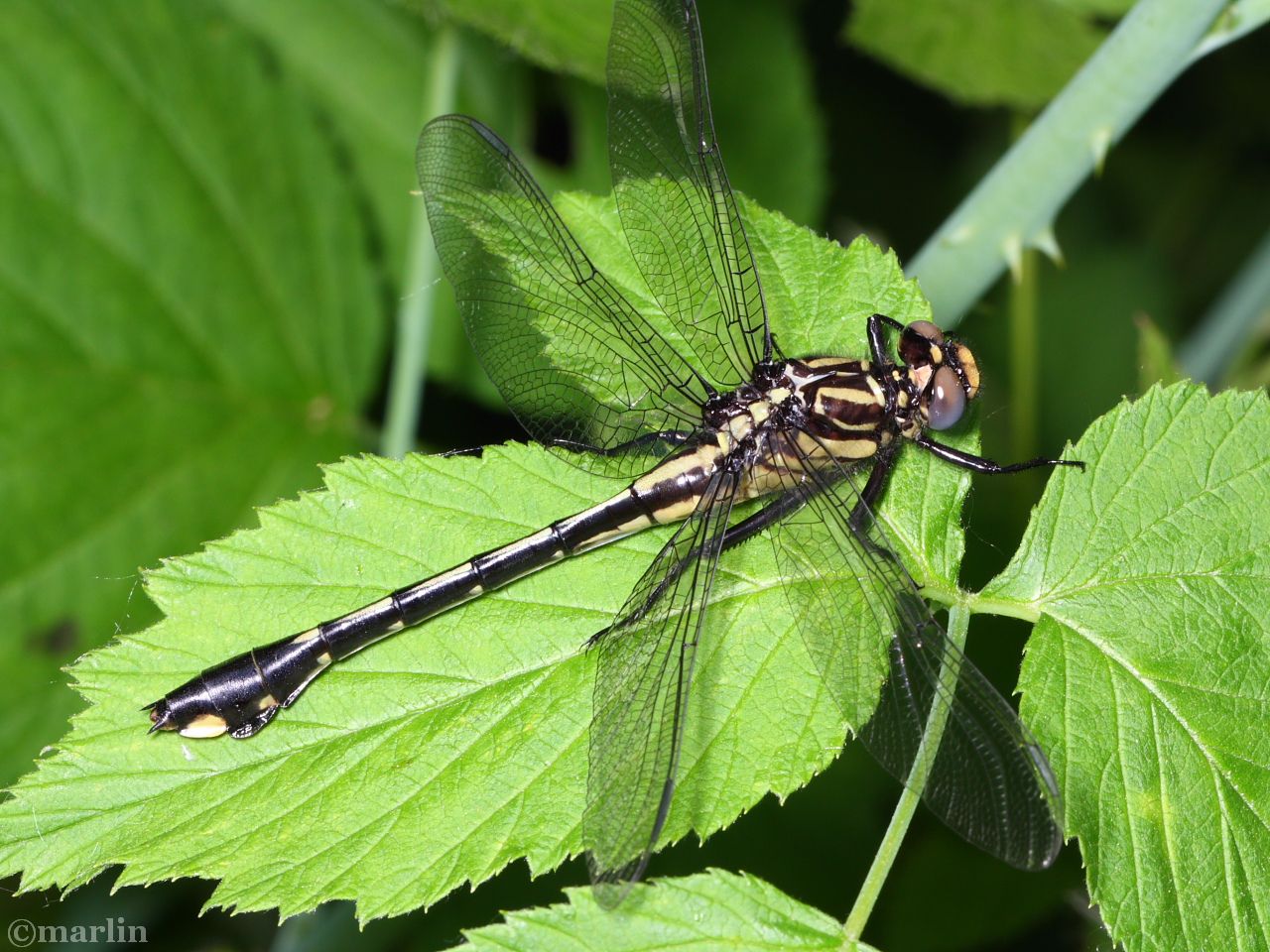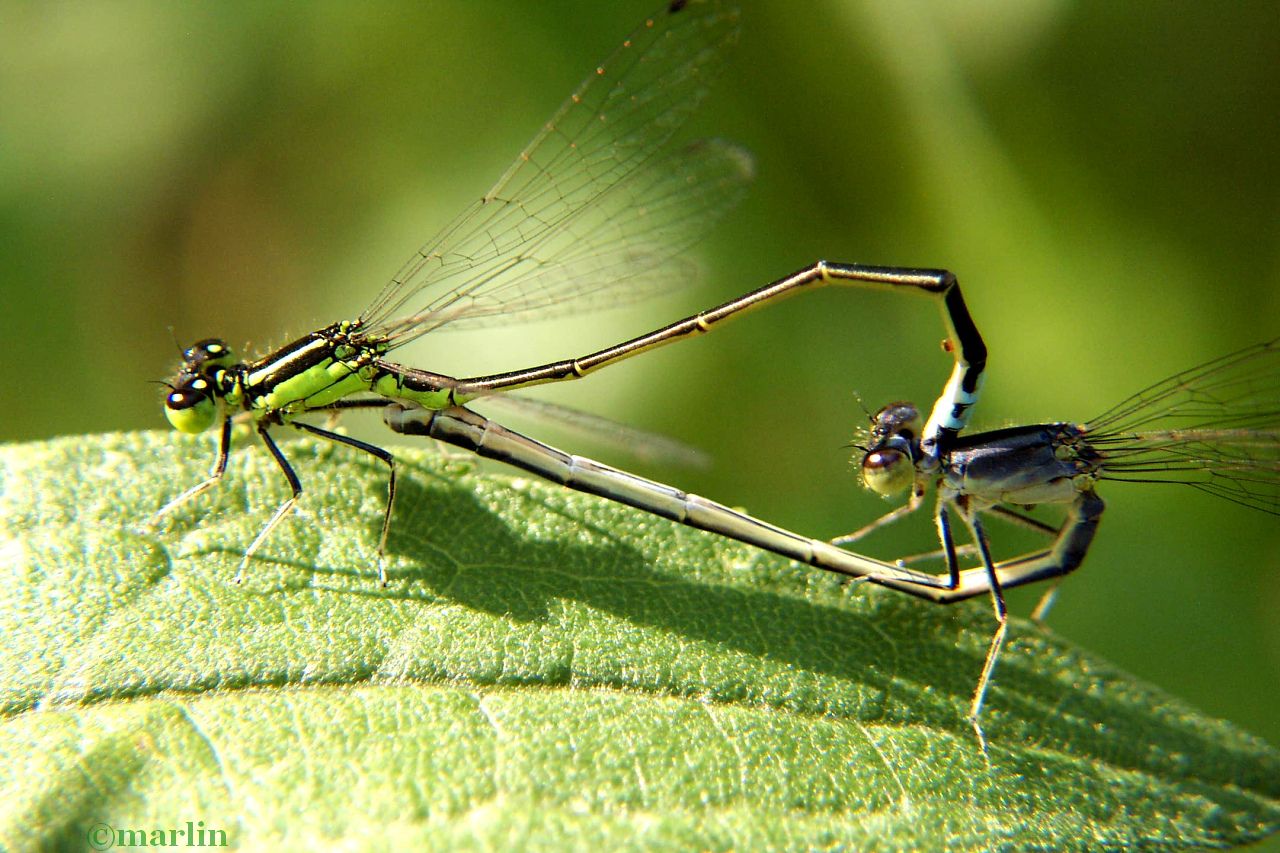Dragon & Damselflies
are divided into two suborders: Zygoptera (damsel) and Anisoptera (dragon). These colorful, enchanting insects date back about 325 million years, to the Carboniferous Period of the Paleozoic Era. They were some of the largest invertebrate animals to ever have lived; the fossil record shows specimens of an ancestral group, the protodonata, with a 30-inch (nearly 1 meter) wingspan.
This is the picture that thrilled me so much when I first downloaded it from the camera that I became hooked (some say obsessed) on macro photography – not that I hadn’t been thrilled before, but this was the killer. Taken in natural light in 2002 with a Kodak DC4800 point-and-shoot camera equipped with close-up lens. Kodak invented digital photography, by the way – and their early cameras were often overlooked as serious contenders because Kodak was still convinced their customers wanted to shoot film and buy prints of their pictures and they let their digital camera business suck hind teat, so to speak. Too bad because they made very versatile cameras with excellent optics.
These skittish insects require patience and persistence. Their heinously annoying habit of perching on swaying grass blades projecting over the water certainly presents a challenge to a photog. Every macro-photographer owes her or himself an hour or two photographing some of the loveliest creatures on Earth. What better way to spend a quiet summer afternoon?
Today, there are about 450 North American species of damselfly, and about 5,000 odonate species in 25 families worldwide. They have evolved into highly efficient aerial predators; their freely moveable heads sport huge compound eyes and their sharp biting mouthparts, (odonata = Greek “toothed ones”) coupled with their four powerful, independent wings make them extremely agile flyers capable of snatching prey in midair. They can fly both forwards and backwards or hover.
The damselfly nymph is predacious. Usually it lies in wait for other aquatic bugs to get within range and then grabs them with its ‘labium’ which is a modified lower jaw. The nymph will proceed through 10 to 12 instars before becoming fully developed and ready to emerge as an adult. With each molt the nymph becomes somewhat darker in color. Finally the nymph will swim towards the shore and crawl into shoreline vegetation. While clinging to this vegetation the nymph’s skin breaks along the wing case and out crawls a shortened version of the adult. Before taking flight, the new adult must pump body fluids into its abdomen and wings. Depending on the species, the adult will live for several weeks to several months before mating and dying.
The adult has four wings that fold over the back. The male of the most common variety in the interior is blue while the female is more of a slate color. For the nymph, a fairly large and bulbous head sits on a tubular shaped body. The eyes of the damsel are fairly pronounced but not as large or pronounced as the eyes of a dragonfly nymph. Odonata Index
Odonates are characterized by their very small antennae, large compound eyes covering most of the head, long, slender abdomen, and two pairs of large flying wings. Each compound eye is composed of nearly 28,000 individual units, (ommatidia) and fully 80% of their brain is devoted to analyzing visual information.
Odonates are generalist feeders – they will take advantage of whatever prey is available, chiefly flies. Dragonflies will often feed in a group when there are a large number of flying insects about, especially ants or termites in the process of swarming. Many’s the time I have watched entire herds of green darner dragonflies picking off slowly flying queen ants from a nearby swarm. I have seen pods of a hundred or more so engaged in one place – it’s quite a sight!
It’s best to find a nice open field near water. Go out in the evening where you can find a vantage point looking aslant into the setting sun, so the insects in the air are backlit. It is in such a situation, in summer, one will be able to see the massive number of insects in the air! Ants usually swarm 2-3 days after a heavy rain, especially when it’s been dry for a spell. Emerging drones and queens can be quite numerous (queens outnumber drones 10:1 and are much larger). Of course, the easiest way is to find a dragonfly mob and you’ll usually be able to see what they are eating – – chances are: big, fat, lumbering ant royals.
Damselflies are similar to dragonflies, but the adults can be differentiated by the fact that the wings of most damselflies are held along the body when at rest – except, of course, those in family Lestidae (above) – the so-called spreadwing damselflies. The hind wing of the damselfly is essentially similar to the forewing, while the hind wing of the dragonfly broadens near the base, caudal to the connecting point at the body. Damselflies are also usually smaller, weaker fliers than dragonflies, and their eyes are separated. Damselflies are generally smaller and not as robustly constructed as their brethren, who frequently prey on them.
Damselflies are not capable of the speed or aerial acrobatics of their larger brethren, but they too snatch prey in midair. I have seen individuals lying in wait until a tasty moth happens by, whereupon they launch themselves at the unfortunate beast and return to their perch where they devour their prey. I have watched quite a few miss as well, and return empty-handed. Many moths are easily able to elude their sometimes clumsy flight skills.
Young Male Calico Pennant. Both genders start with yellow markings; the males transition to red as they mature. Although a necessarily aquatic larva, I have found calico pennants abundant on high ground, hundreds of yards from the nearest water. Pennants of both genders perch on wildly waving grass stems in meadows, along roadsides and waste places, beside ponds and slow-moving water. They are very wary and difficult to approach from above or behind.
Much larger dragonfly species existed in the distant past than occur on earth today. The largest, found as a fossil, is an extinct Protodonata named Meganeura monyi from the Permian period, with a wingspan of 70-75 cm (27.5-29.5 in). This compares to 19 cm (7.5 in) for the largest modern species of odonates, the Hawaiian endemic dragonfly, Anax strenuus. The smallest modern species recorded is the libellulid dragonfly, Nannophya pygmaea from east Asia with a wingspan of only 20 mm, or about ¾ of an inch.
Dragonflies are the world’s fastest insects and, although estimates of their speed vary wildly, most credible authorities say they are capable of reaching speeds of between 30 and 60 km/h (19 to 38 mph). A study showed that dragonflies can travel as much as 85 miles in one day.
The common whitetail dragonfly gets its common name from the white waxy coating that develops on the wings and abdomen of the mature male. Females have different wing markings and do not display the white tail of the mature male. Odonata Index
The chalk-fronted corporal is larger than most species in the genus Ladona. I usually find them perching on flat surfaces near the water. This cooperative male was hanging out in the Allegheny National Forest of Pennsylvania, on a concrete boat launch along with a dozen or more of his brothers and sisters. Their flight season is relatively short, from early May until early August.
Family Gomphidae (clubtails) contains about 100 species in 14 genera in North America and about 900 species worldwide. Their eponymous appendage is plain to see in this macro photograph of a mature male.
The presence and abundance of dragonflies and damselflies may be taken as an indicator of ecosystem quality. Local populations can be strongly affected by any change in water flow, turbidity, or in aquatic or waterside vegetation. The greatest numbers of species are found at sites which offer a wide variety of microhabitats, prey, and clean water. Odonate nymphs are aquatic, and as such need unpolluted water.
Many damselfly species are sexually dimorphic, the males often being more brightly colored than the females. Like dragonflies, they reproduce using indirect insemination and delayed fertilization. A mating pair form a shape known as a “heart” or “wheel”, the male clasping the female at the back of the head, the female curling her abdomen down to pick up sperm from secondary genitalia at the base of the male’s abdomen. The pair often fly in tandem, with the male still clasping the female while she lays eggs.
Damselflies complete a life cycle in one or two years. The adults mate over the shallow water, sometimes in flight but often while clinging to the exposed portions of weed beds or shoreline vegetation. Immediately after mating, some females will crawl down the vegetation, and ‘into’ the water to lay her eggs on the submerged portion of the vegetation. Once the eggs are laid she will crawl back up the vegetation and repeat the process. When the eggs hatch they do not go through the larva and pupa transformations. The newly hatched damsel is just a smaller version of the later immature stages.
The damselfly nymph is carnivorous, obtaining live prey by ambush. The nymph will proceed through 10 to 12 instars, or molts, before becoming fully developed and ready to emerge as an adult. With each molt the nymph becomes somewhat darker in color. Finally the nymph will swim towards the shore and crawl into shoreline vegetation. While clinging to this vegetation the nymph’s skin breaks along the wing case and out crawls a shortened version of the adult. Before taking flight, the new adult must pump body fluids into its abdomen and wings. Depending on the species, the adult will live for several weeks to several months before mating and dying.
The raptorial front legs combined with some serious ripping mouthparts make these otherwise ethereal creatures fearsome predators. Sometimes they are precision flyers and make a clean, mid-air intercept, but I’ve seen them miss even slowly flying moths repeatedly as well. Often I’ve seen them pounce on resting or nectaring insects.
Their large bulbous compound eyes provide a vision field of 300 degrees. This insect needs binocular vision to maintain their predatory flying capture ability.
“All Odonates have excellent vision. Each compound eye is comprised of several thousand elements known as facets or ommatidia. These ommatidia contain light sensitive opsin proteins, thereby functioning as the visual sensing element in the compound eye. But unlike humans, which only have 2 or 3, sometimes 4 opsin proteins, day-flying dragonfly species have four or five different opsins, allowing them to see colors (wavelengths) that are beyond human visual capabilities, all the way to ultraviolet.”
Insects | Dragonflies | Damselflies | Spiders


